Contact your dedicated Account Manager:
Kyle Thomas 
SM SLED Manager
732-564-8526
Kyle_Thomas@shi.com
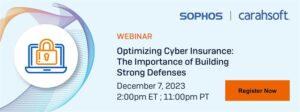
Contact your dedicated Account Manager:
Kyle Thomas 
SM SLED Manager
732-564-8526
Kyle_Thomas@shi.com
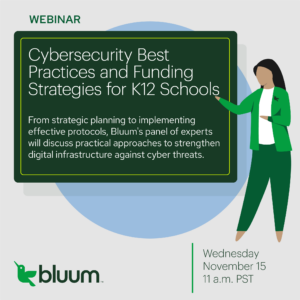
Join Bluum for an engaging webinar that delves into implementing cybersecurity best practices in K12 schools. This webinar aims to equip educators, administrators, and IT professionals with comprehensive insights into services and products available to you through Bluum and how to fund them. From strategic planning to implementing effective protocols, our panel of experts will discuss practical approaches to strengthen digital infrastructure against cyber threats.
Contact your dedicated Account Manager:
Joel Anderson 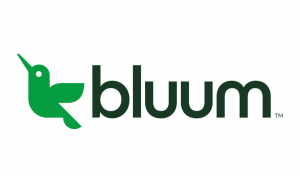
Sales Director- Central Territory
612-455-3668
joel.anderson@bluum.com
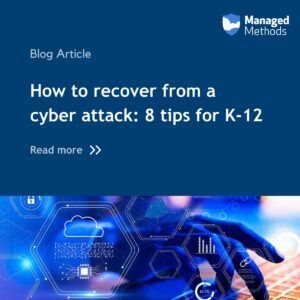
Worried about what might happen if your school district suffers a data breach?
You’re not alone. Schools across the United States are bracing for impact, awaiting the day a malicious incident puts their cybersecurity strategy to the test. And, as cybercrime rises worldwide, it’s only a matter of time before it does. In the spirit of planning ahead, let’s discuss how to recover from a cyber attack so that you can better protect your students from a future security breach.
Contact your dedicated Account Manager:
David Waugh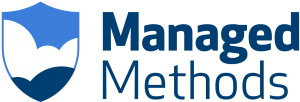
Sales and Marketing Vice President
303-415-3643
dwaugh@managedmethods.com
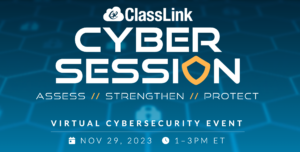
Join us for a ClassLink #CyberSession on November 29, 2023! You’ll learn about a no-cost tool to improve cybersecurity in this concise, 2-hour event.
You’re doing everything you can to improve cybersecurity in your schools, but how do you know if it’s enough?
Join ClassLink leaders and cybersecurity experts at the ClassLink CyberSession, where they’ll introduce you to the Cybersecurity Rubric (CR). The CR is a free tool school leaders can use to self-assess their cybersecurity practices and make significant improvements.
Along with an introduction to the CR, you’ll learn how the White House’s Secure by Design pledge will reduce the security burden on schools. Plus, uncover strategies for using new ClassLink features to make your schools more cyber-secure.
Made for busy leaders, this session is short and filled with actionable insights. Register now to find your path to stronger cybersecurity.
(This session will benefit all school leaders and is not restricted to ClassLink schools.)
What to expect:
✔️ Gain Access to the Cybersecurity Rubric
✔️ Understand how the #SecurebyDesign pledge reduces the burden on schools
✔️ Discover new cybersecurity features in ClassLink
Contact your dedicated Account Manager:
ClassLink
Lyle Dadian
Director of Instructional Technology
M: 414-588-9181
O: 862-203-2099
ldadian@classlink.com
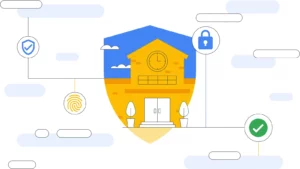
Earlier this year, we joined private sector and government cybersecurity leaders at the White House for the “Back to School Safely: Cybersecurity for K-12 Schools” event. There, we shared a K-12 Cybersecurity Guidebook that includes best practices to help school IT administrators prepare to return to school safely.
For Cybersecurity Awareness Month, we’re sharing a few highlights from the guide — now available in more than 30 languages — plus other helpful resources. Admins can also sign up for our Safer Digital Learning event on October 25, where we’ll demo more of the guide’s security features and best practices to keep schools safe from cybersecurity threats.
Educational institutions are top targets for cyberattacks, with bad actors looking to exploit schools for their own profit. Forty-six percent of schools which have yet to be targeted believe they’ll eventually be attacked.
We’re committed to helping schools keep data secure and digital learning environments safe. Our education products, like Google Workspace for Education and Chromebooks, can improve schools’ cybersecurity and make it easy to implement the recommendations in our guidebook.
With Google Workspace for Education, admins can get a complete view into security with notifications, alerts and actions in the alert center. They can also manage access to tools with two-factor authentication, single sign-on and password management, set their own data rules and policies with data loss prevention.
Meanwhile, Chromebooks are highly secure, scalable and easy to use thanks to their built-in security features. In fact, there has never been a reported ransomware attack on any business, school or consumer ChromeOS device. And they help protect schools from evolving threats with 10 years of automatic software updates.
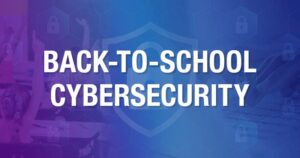

In today’s digital landscape, hackers and bad actors have developed increasingly sophisticated methods. Their main goal is to steal personal information for malicious purposes and wreak havoc on your system. There are many digital pitfalls. However, there are plenty of protective measures you can take to keep your school safe. Fortifying your cybersecurity skills can help shield school systems from cyber attacks. Below are some cyber preparedness tips to help safeguard your school’s data:
Take your cyber readiness to the next level with the Cybersecurity Rubric. The Cybersecurity Rubric is a free self-assessment tool that you can use to assess your school’s cyber preparedness.
Contact your dedicated Account Manager:
ClassLink 
Lyle Dadian
Director of Instructional Technology
M: 414-588-9181
O: 862-203-2099
ldadian@classlink.com
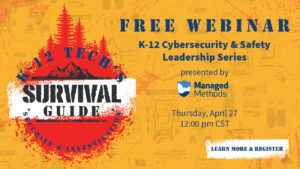
After what you’ve been through over the past several years, preparing for the worst is just about part of your daily routine.
Alas, summer break is right around the corner, and you know what that means—summer projects!
Join ManagedMethods in expecting the best while preparing for the worst during our next installment in the K-12 Cybersecurity & Safety Leadership webinar series.
We’ll discuss practical tips and recommendations for security, safety, and incident response that you can implement over summer break so that your district can thrive, not just survive, in the 2023/24 school year.
During this session, you will learn the following:
Register now to take part in the conversation and arm your district with the security and investigation strategies and skills needed for a successful school year.
Contact your dedicated Account Manager:
David Waugh 
Sales and Marketing Vice President
303-415-3643
dwaugh@managedmethods.com

The shift to digital learning in response to the COVID-19 pandemic has opened up opportunities for schools to adopt new EdTech tools and create more innovative learning environments. But this has also given cybercriminals new avenues to attack school networks, devices, and data.
Experts recommend protecting all aspects of an educational organization’s online presence:
Protect end-user devices connected to a network or cloud with technologies including antivirus tools, endpoint protection platforms (EPP), and endpoint detection and response (EDR) to detect, prevent and respond to cyberattacks in real-time.
Prevent and remediate internal and external threats with next-generation firewalls, intrusion prevention, and detection and response systems designed for complete system visibility.
Safeguard cloud-based data and applications and protect against data loss and malicious theft with tools that elevate application visibility, security, and control for hybrid learning environments.
Detect and block threats deployed through email and the Internet with real-time protection technologies, including spam and DNS filters, encryption, and antivirus.
Keep user data secure with backup and recovery software for the cloud for on-premises and hybrid learning environments and backup-as-a-service (BaaS) solutions.
Awareness and compliance training for students and staff to improve cybersecurity hygiene and reduce phishing and social engineering attacks.
Put the building blocks in place to protect yourself from data leaks and cybercriminals with the support of the Bluum team.
In 2021, district-level leaders ranked cybersecurity as the top concern for the seventh year straight. *
Reported cyberattacks against K-12
schools in 2020. an 18% increase over 2019
Days of downtime in U.S. schools due to
ransomware attacks (Feb. ’18 – Jun. ’21)
K-12 Schools with a full-time
staffer dedicated to cybersecurity
Contact your dedicated Account Manager:
Sarah Goncalves 
Regional Vice President of Sales
888-226-5727 x3730
Sarah.Goncalves@bluum.com
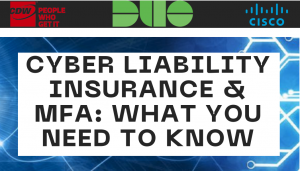
Cyber liability insurance acts as a general line of coverage designed to mitigate losses and costs from a variety of cyber incidents, including data breaches, network damage, and the resulting business interruption. Multi-factor authentication (MFA) has proven to be a strong preventative strategy against stolen credentials and brute-force attacks, making it a top
criterionrequestedby cyberinsurance companies.
What You Will Learn
Contact your dedicated Account Manager:
John Buttita 
Sales Manager
877-325-3380
johnbut@cdw.com
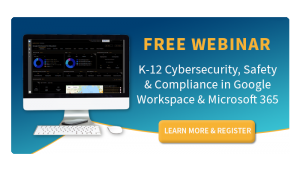
For the first time ever, technology is at the forefront of K-12 education. Technology teams are struggling to keep up with the ever-broadening demands on their time and expertise on a relatively flat budget.
According to an EdWeek Market Brief report, districts with more than 1,000 students are accessing an average of 1,449 edtech tools per school year.
Google Workspace and Microsoft 365 for Education fueled K-12’s move to cloud computing by providing many benefits at a low price compared to on-premises. But they have also introduced many new and unique risks to cybersecurity and student cyber safety.
ManagedMethods is a cybersecurity and student safety platform built specifically for K-12 technology teams. Our goal is to alleviate some of the challenges you face by providing visibility, control, and automation to your Google Workspace and/or Microsoft 365 demands.
Register to join Justin Feltus, Systems Administrator at Bremerton School District, and Reginald Gossett, Executive Director of Technology at Troup ISD. You will learn how ManagedMethods helped them secure data, monitor student safety risks, and generally make their jobs a little easier.
During this session, you will learn:
Contact your dedicated Account Manager:
David Waugh 
Sales and Marketing Vice President
303-415-3643
dwaugh@managedmethods.com